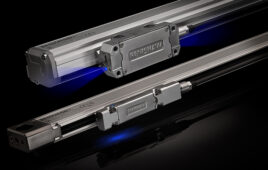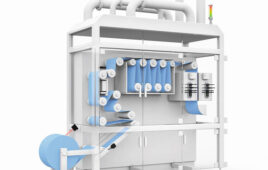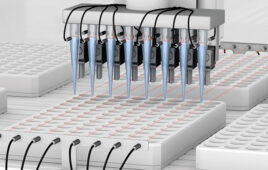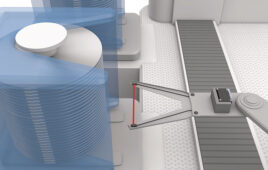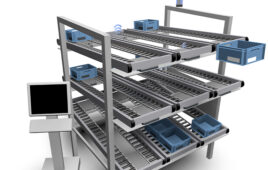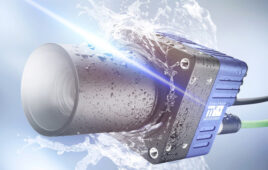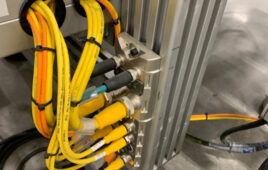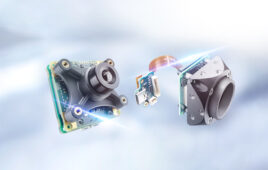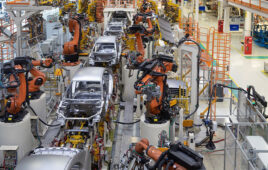By Renishaw The problem: Machine tools can produce significant vibration during operation and high levels of machine vibration can adversely affect the enclosed position encoders installed on these machines, leading to measurement inaccuracies. The quality of axis position measurement can directly impact aspects of process quality, such as feature accuracy and surface finish. Position measurement…
Why Choose an IO-Link Ecosystem for Your Next Automation Project?
By Adis Halimic By now we’ve all heard of IO-Link, the device-level communication protocol that seems magical. Often referred to as the “USB of industrial automation,” IO-Link is a universal, open, and bi-directional communication technology that enables plug-and-play device replacement, dynamic device configuration, centralized device management, remote parameter setting, device level diagnostics, and uses existing…
Using Guided Changeover to Reduce Maintenance Costs, Downtime
By Blake Gieseler A guided changeover system can drastically reduce the errors involved with machine operation, especially when added to machines using fully automated changeovers. Processing multiple parts and recipes during a production routine requires a range of machines, and tolerances are important to quantify. Only relying on the human element is detrimental to profits,…
Tackling the Most Demanding Applications With Precision Sensors
By Rob Crumley Standard industrial sensors can solve a lot of automation challenges. Photoelectric, capacitive, and inductive technologies detect presence, distances, shapes, colors, thicknesses, and more. To satisfy these general applications, there are a few reputable manufacturers in the market that design and produce such products. In many instances, it is possible to interchange them…
Miniature Sensors With Monumental Capabilities
By Jack Moermond The requirement for miniature optical sensors to meet the demands of medical and semiconductor automation equipment often exceeds the capabilities of standard self-contained optical sensors. In some cases, other industry application requirements can be best solved by these same miniature optical sensors with advanced capabilities. So, what do these optical sensors offer…
Considerations When Picking UHF RFID
By Nick Bach If you’ve attempted to implement an ultra-high frequency (UHF) RFID system into your facility, you might have run into some headaches in the process of getting things to work properly. If you are looking to implement UHF RFID but haven’t had the chance to set things up yet, then this blog might…
Sensing Ferrous and Non-Ferrous Metals: Enhancing Material Differentiation
By Michael Kendall Detecting metallic (ferrous) objects is a common application in many industries, including manufacturing, automotive, and aerospace. Inductive sensors are a popular choice for detecting metallic objects because they are reliable, durable, and cost-effective. Detecting a metallic object, however, is not always as simple as it seems, especially if you need to differentiate…
Understanding IP Ratings
By Kyle Bause Ingress Protection (IP) ratings, developed by the International Electrotechnical Commission (IEC), are a standardized measure for manufacturers to specify and understand the level of protection that an enclosure offers against the intrusion of solid objects and liquids. It helps customers understand the suitability of a product for its intended use. There are…
IO-link Delivers Increased Data, Simpler Systems, and Lower Cost
When Ready Systems of Burlington, Ontario, Canada was looking for a replacement for their DeviceNet network architecture, they turned to long-time partner Balluff to investigate possible Ethernet control architectures. While they also provide complex material handling and robotics systems, Ready Systems is most well-known for pallet-based assembly line conveyor systems for the automotive seating industry.…
Improving Overall Equipment Effectiveness
By Mark Bakke Overall equipment effectiveness (OEE) is a critical metric for measuring the efficiency of manufacturing operations. It considers three factors – availability, performance, and quality – to determine the effective use of equipment. Where do we focus to win the biggest improvements? To improve OEE, it’s important to focus on these five key…
Waterways: the Many Routes of Water Detection
By Logan Welch Water is everywhere, in most things living and not, and the amount of this precious resource is always important. The simplest form of monitoring water is if it is there or not. In your body, you feel the effects of dehydration, in your car the motor overheats, and on your lawn, you…
Demystifying Machine Learning
By Anjesh Shekhar Machine learning can help organizations improve manufacturing operations and increase efficiency, productivity, and safety by analyzing data from connected machines and sensors, machine. For example, its algorithms can predict when equipment will likely fail, so manufacturers can schedule maintenance before problems occur, thereby reducing downtime and repair costs. How machine learning works…
Embedded vision – What It Is and How It Works
By Frantisek (Frank) Jakubec Embedded vision is a rapidly growing field that combines computer vision and embedded systems with cameras or other imaging sensors, enabling devices to interpret and understand the visual world around them – as humans do. This technology, with broad applications, is expected to revolutionize how we interact with technology and the…
Identify Failures Before They Happen: The PF Curve
By Tom Knauer The P-F curve is often mentioned in condition monitoring and predictive maintenance discussions. “P-F” refers to the interval between the detection of a potential failure (P) and the occurrence of a functional failure (F). The P-F curve is an illustrative generalization of what happens to an asset, machine or component as it…
Lithium Ion Battery Manufacturing – RFID is on a Roll
By Max Baker With more and more consumers setting their sights on ‘Drive Electric,’ manufacturers must prepare themselves for alternative solutions to combustion engines. This change will no doubt require an alternative automation strategy for our electric futures. The battery The driving force behind these new electric vehicles is, of course, the battery. With this…
Guided Changeover Solution Reduced Can Labeler Changeover Downtime by 50%
Reduce format change downtime. Improve ramp up of the production line. after a completion of changeover. Reduce training requirements and the need for experienced personnel. Increase productivity and profitability. A global leader in food manufacturing had a specific need to improve production efficiency. After evaluating and piloting they decided to implement the Balluff “Guided Changeover…

